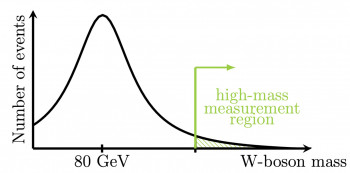News
April 2025
Queen Mary particle physicists lead pioneering study of high-mass W-bosons at CERN
Centre for Fundamental Physics
25 April 2025Particle physicists at Queen Mary have used data from the Large Hadron Collider at CERN to help measure a key elementary particle, known as the W-boson, in mass regions never explored before. Their work explores previously uncharted mass regions, offering fresh clues about the forces that shape our universe. The ... [more]
Queen Mary Physicists Share 2025 Breakthrough Prize in Physics
Centre for Fundamental Physics
12 April 2025Physicists at Queen Mary University of London are celebrating this week after being named among the winners of the prestigious 2025 Breakthrough Prize in Fundamental Physics. The award honours the global scientific collaborations behind the ATLAS, CMS, LHCb and ALICE experiments at CERN's Large Hadron Collider (LHC) in Geneva, Switzerland – the ... [more]
Particle Physicists Share 2025 Breakthrough Prize in Fundamental Physics
Centre for Fundamental Physics
11 April 2025Particle Physicists Share 2025 Breakthrough Prize in Fundamental Physics Particle Physicists at Queen Mary University of London are celebrating this week after being named among the winners of the prestigious 2025 Breakthrough Prize in Fundamental Physics. The award honours the global scientific collaborations behind the ATLAS, CMS, LHCb and ALICE experiments at ... [more]
February 2025
A Night of Science and Engineering: exploring Tomorrow's World at Queen Mary
24 February 2025Queen Mary University of London's third annual Night of Science and Engineering brought together leading industry partners, researchers, academics, policymakers, and the public for an evening of discovery, innovation, and collaboration. Held in the historic Octagon venue on 20 Feb, this year's event, themed 'Tomorrow's World', showcased groundbreaking research that is ... [more]





![ATLAS detector endcap [Photo credit ATLAS collaboration].](/content/news/images/ee6e3bdfe7c71f1788e1408b408bae2a.jpg)
